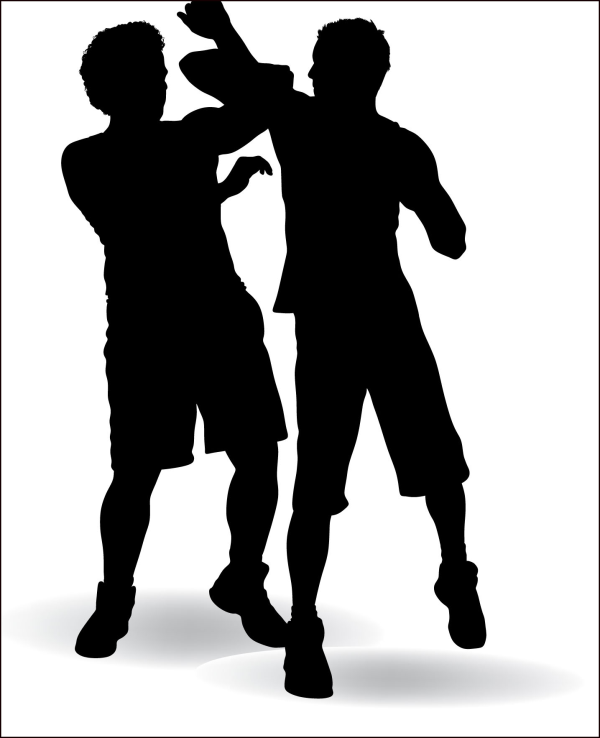Do you know what happened to any paints, coatings and surface preparation materials left over after the last project at your facility?
Audit, Compliance and Risk Blog
Got Paint? Complying With Hazardous Waste Regulations & Requirements
Posted by Jon Elliott on Fri, Nov 02, 2012
Tags: Business & Legal, Audit Standards, Health & Safety, California Legislation, Environmental risks, Environmental, Hazcom
Psychological Fitness for Duty – When and How to Evaluate Employees
Posted by Jon Elliott on Thu, Oct 18, 2012
When an employer becomes concerned that an employee may be incapable of performing his or her job, one response is formal evaluation of that employee’s “fitness for duty (FFD).” Although most cover physical abilities, referrals are also made for psychological FFD evaluations, to determine whether an employee has a psychological impairment that makes him or her unable to perform effectively and safely. These may be triggered when an employee is exhibiting signs of psychological or emotional stress, including those that manifest in hostile or threatening behaviors, or in other behaviors that lead co-workers, or the employer, to be concerned for their safety.
Tags: background checks, Business & Legal, Employer Best Practices, Health & Safety, Employee Rights, Disability benefits
GHG Auditing and Environmental Compliance — Are You Prepared?
Posted by Jon Elliott on Tue, Oct 16, 2012
Environmental compliance has been an important issue for large, multi-national companies for many years, and in recent years it has taken on added importance for their suppliers. Case in point: Walmart, Procter & Gamble, IBM – many Fortune 500 companies – are requiring that their vendors audit and quantify the greenhouse gas (GHG) emissions in their supply chains. Indeed, many of these high-profile organizations have undertaken ambitious plans for reducing their carbon footprint. (A big driver of this activity is stronger environmental regulation and pressure from environmental organizations, customers, investors and the like.) For example, in early 2010 Walmart announced a goal to eliminate 20 million metric tons of GHG emissions from its global supply chain by the end of 2015. Procter & Gamble has the stated objective of generating 100% of its energy from renewable resources – with a target of generating 25% of that by 2020.
Tags: Corporate Governance, Audit Standards, Health & Safety, Environmental risks, Environmental
OSHA "Severe Violators": A Release from Enhanced Enforcement
Posted by Jon Elliott on Tue, Sep 25, 2012
The Occupational Safety and Health Administration (OSHA) establishes national standards that employers must meet in order to protect workers. Employers who fail to meet OSHA audit and compliance requirements are subject to enforcement actions by OSHA or delegated state agencies. Employers who perform the worst can be subject to OSHA’s Severe Violator Enforcement Program (SVEP), established in 2010 as the latest in a series of enhanced enforcement programs for those employers that OSHA considers the most dangerous and/or recalcitrant. SVEP has always offered the possibility that an employer can demonstrate its rehabilitation and exit the program, and just last month OSHA finally published clear guidelines for doing so.
Tags: Employer Best Practices, Health & Safety, OSHA, Environmental risks
MAP-21 Impacts on Current Federal Motor Carrier Safety Regulations
Posted by Russ Boesch on Wed, Sep 05, 2012
On July 6, 2012, President Obama signed into law the “Moving Ahead for Progress in the 21st Century Act (MAP-21)”.The 584-page legislation revises and adds many sections to the U.S. Code, intending to “create a streamlined, performance-based, and multi-modal program to address the many challenges faced by the US transportation system, including improving safety, maintaining infrastructure condition, reducing traffic congestion, improving efficiency of the system and freight movement, and protecting the environment” (USDOT, Federal Highway Administration).
Tags: Health & Safety, OSHA, Environmental risks, Environmental, EHS, EPA, Hazcom, EEOC
The federal Occupational Safety and Health Act provides employers with a "General Duty" to provide their employees with “safe and healthful working conditions, in workplaces free of recognized hazards” which comply with OSHA standards for general industry.
Tags: Health & Safety, OSHA
Electrical Safety OSHA: Principles and Hazard Controls
FREE! Education Webinar from STC | August 23, 2012
In 2010, 164 workers died after contact with electrical current in U.S. private industry. That amounts to an average of more than 3 deaths per week. In this free education Webinar, our presenter, Barbara Ruble, CPEA, QEP, will discuss the legal requirements related to electrical safety, how to identify electrical hazards, and suggestions for establishing and implementing controls to protect employees, as well as minimize the opportunity for business interruption.
Tags: Health & Safety, OSHA, STP Online, STC, Webinar
Hydraulic Fracturing: Can We 'Frack' Without Fouling the Environment?
Posted by Jon Elliott on Mon, Aug 13, 2012
Energy companies have used hydraulic fracturing—often referred to as ‘fracking’—since the 1940s in order to enhance recovery of oil and natural gas from low-permeability (“tight”) rock formations.
Frackers pump high-pressure fluids into rock formations to create and expand cracks and create pathways for valuable hydrocarbons to flow out. The stimulant fluids are usually water-based, with additional chemicals (acids, surfactants, biocides, etc.) to improve the effectiveness of the fracking process as well as solid ‘proppants’, which prop open the expanded openings (sand, etc.).
Tags: Health & Safety, Environmental risks, Environmental, EPA, fracking, hydraulic fracking
A recent news headline told the story of two nurses who were involved in a scuffle with the father of a newborn inside a New York hospital--apparently, the father was a high profile member of the Kennedy family. The conflict was triggered when he began to carry his infant son out of the hospital without the usual authorized procedures--at which point one of the nurses attempted to block him from leaving.
Tags: Health & Safety, OSHA, Workplace violence
Court Decision Supports EPA Rulings for Greenhouse Gas Emissions
Posted by Jon Elliott on Thu, Jul 12, 2012
On June 26, the federal District of Columbia Circuit Court of Appeals issued a major decision, upholding four rulings by the U.S. Environmental Protection Agency (EPA). All four rulings expand the regulation of greenhouse gas (GHG) emissions under the Clean Air Act (CAA). The case is Coalition for Responsible Regulation v. EPA.1
Tags: Health & Safety, California Legislation, Environmental, EPA








